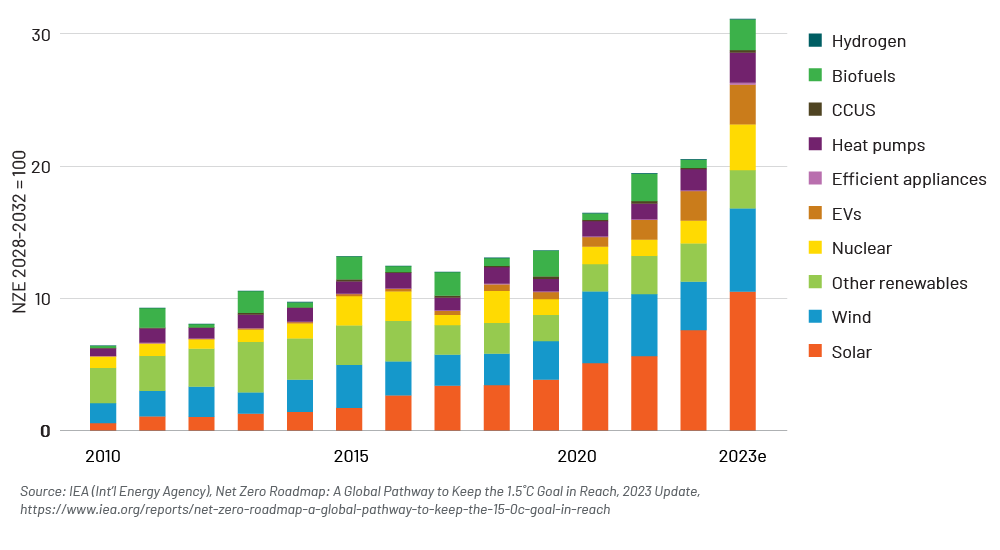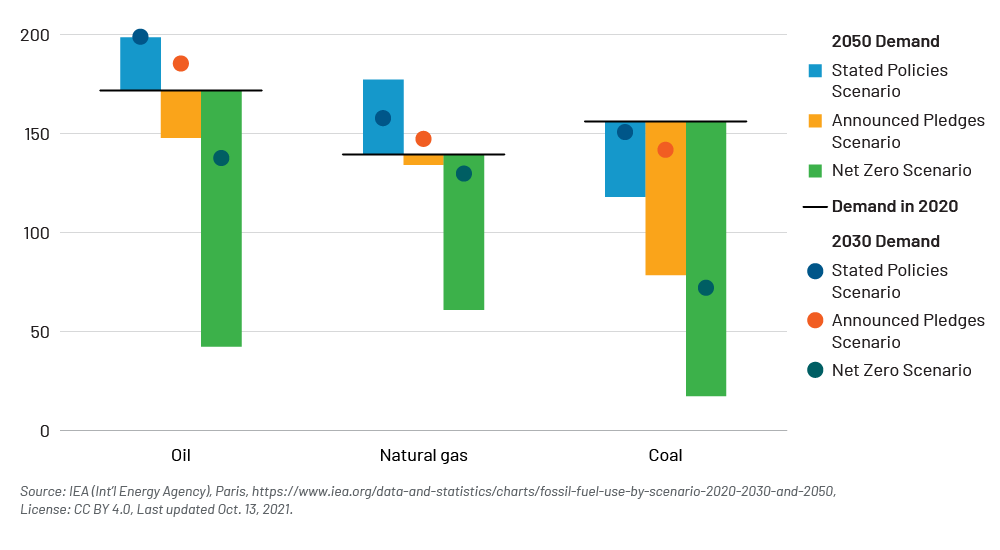-
Property & Casualty
Property & Casualty Overview

Property & Casualty
We offer a full range of reinsurance products and the expertise of our talented reinsurance team.
Expertise
Publication
Florida Property Tort Reforms – Evolving Conditions
Publication
Is Human Trafficking the Next Big Liability Exposure for Insurers?
Publication
When Likes Turn to Lawsuits – Social Media Addiction and the Insurance Fallout
Publication
Generative Artificial Intelligence and Its Implications for Weather and Climate Risk Management in Insurance
Publication
Engineered Stone – A Real Emergence of Silicosis
Publication
Who’s Really Behind That Lawsuit? – Claims Handling Challenges From Third-Party Litigation Funding -
Life & Health
Life & Health Overview

Life & Health
We offer a full range of reinsurance products and the expertise of our talented reinsurance team.

Publication
Understanding Physician Contracts When Underwriting Disability Insurance
Publication
Voice Analytics – Insurance Industry Applications [Webinar]
Publication
GLP-1 Receptor Agonists – From Evolution to Revolution U.S. Industry Events
U.S. Industry Events
Publication
Always On: Understanding New Age Addictions and Their Implications for Disability Insurance
Publication
Dying Gracefully – Legal, Ethical, and Insurance Perspectives on Medical Assistance in Dying -
Knowledge Center
Knowledge Center Overview

Knowledge Center
Our global experts share their insights on insurance industry topics.
Trending Topics -
About Us
About Us OverviewCorporate Information

Meet Gen Re
Gen Re delivers reinsurance solutions to the Life & Health and Property & Casualty insurance industries.
- Careers Careers
Human Activity Generates Carbon and Warms the Atmosphere. Is Human Ingenuity Part of the Solution?

February 26, 2024
Tim Fletcher
English
Amid a growing sense that our atmosphere is in fact changing, as manifested in the recent rise in Severe Convective Storms (SCS) and extreme rain events, questions arise about how to best stem the climatological tide. At one level, changes in behavior and a shift away from fossil fuels will reduce the amount of carbon emissions. But at another level comes an intriguing thought: Do we have the means to physically remove atmospheric carbon and help keep temperature rises within acceptable levels, limiting future risk while also easing the transition from fossil fuels? If so, what could that mean for insurers and the policyholders they serve?
Let’s take a look.
The Challenge
Scientists assert that human actions as far back as the Industrial Revolution – primarily the burning of fossil fuels – have caused greenhouse gasses to rapidly rise in the atmosphere.1 Further, as carbon dioxide, methane and other gases increase and rise, they act as a blanket that traps heat, warms the planet, shifts weather patterns, and melts land ice.2 Driven by growing concern over a potentially irreversible threat, 196 countries (including the U.S) in 2015 became signatories to the Paris Agreement, a UN‑facilitated international treaty with the goals of limiting “the increase in global average temperature to well below 2.0°C above pre-industrial levels” and pursuing efforts “to limit temperature increase to 1.5°C above pre-industrial levels.”3
Many scientists fear that if temperatures continue to rise beyond that point, “the planet could reach irreversible tipping points.”4
Recent statements from the UN’s Intergovernmental Panel on Climate Change (IPCC) emphasize that “to limit global warming to 1.5°C, greenhouse gas emissions must peak before 2025 at the latest and decline by 43% by 2030.”5
What Do We Do With All That Carbon?
At first glance, carbon removal may not seem paramount amid calls for simply eliminating dependency on fossil fuels; however, nearly every projection of cutting greenhouse emissions calls for some amount of carbon removal because certain economic sectors such as aviation, cement-mixing, and steelmaking are difficult to perform with renewable energy and batteries.6 The high temperatures required by the steel and cement industries are more than what electricity can deliver, and it’s difficult to fly planes powered by lithium batteries.
The authors of a 2022 IPCC report advocate for actively removing carbon from the atmosphere through what is known as carbon capture, utilization, and storage (CCUS).7 Additionally, the International Energy Agency (I.E.A.), as part of its “net zero” roadmap, forecasts oil, gas and coal supplying only 10% of the world’s energy by 2050 as compared to 80% today.8 The I.E.A. further projects that roughly half of those remaining fossil fuel emissions would be “abated” with carbon capture technology:9
Clean Technology Deployment Index

In general terms, these technologies capture carbon dioxide (CO2) emitted from major sources, including fossil fuel power plants, in turn allowing the CO2 to be used or safely stored.10
Carbon Capture and Sequestration (CCS)
Simply stated, CCS removes the CO2 emitted from fossil fuels burned in power plants and industrial settings and transports it to sites where it is permanently sequestered deep underground, below the lowest underground drinking water source.11 A related approach known as Direct Air Capture (DAC) removes CO2 from the atmosphere after it has been emitted.12 While there are a few of these facilities currently in operation, the number of facilities is expected to grow rapidly in the years ahead. As an example, Occidental Petroleum Corp. hopes to begin operating a large DAC facility outside of Midland, Texas in 2024, with the stated goal of helping the company reach net-zero emissions on all of its operations, its own energy use, and its customers’ use of its products by 2050 while also enabling ongoing oil extraction investment.13 Spurring further investment in CCS technology are grants from the U.S. government, tax credits, and a federal purchasing program for carbon removal credits.14
Critics contend that the high costs associated with CCS don’t justify the investment, stating that implementation costs have not decreased in the last 40 years as they have with renewable technologies such as solar, wind, and batteries.15 They add that the technology underpinning CCS remains dubious, with concerns ranging from leaks into other geothermal layers to outright rejection of CO2, as happened with a CCS project in Norway.16
Carbon Capture and Utilization (CCU)
CCU endeavors to capture atmospheric carbon and use it either directly without chemical alteration or transform it into various products.17 Demand for CO2 is immense in modern society – around 230 megatons each year, mainly in direct use by the fertilizer industry and for enhanced oil recovery.18
While CCU efforts are nascent, they are growing in both breadth and scope. One Brooklyn-based startup uses photosynthesis-inspired technology to create vodka distilled from CO2 derived products.19 A German company that makes polyester materials is at work on using CO2 as a raw material in house detergents and cleaning products.20 Other efforts are more futuristic and at first glance far-fetched, such as the California-based company that claims to have developed a suitcase-size modular reactor that can convert CO2 into the ingredients necessary to produce a synthetic jet fuel that produces much lower carbon emissions than fossil-based fuel.21
Bioenergy with Carbon Capture and Storage (BECCS) and Bioenergy with Carbon Capture and Utilization (BECCU)
CCU and CCS address atmospheric carbon. But what about the carbon that abounds on the earth’s surface and is generated through the agricultural sector? Could this material be converted to sustainable energy products that also enable a net reduction of CO2?
BECCU and BECCS technologies hold promise to meet those objectives.
Often mentioned together, BECCS and BECCU involve different technologies to reduce CO2 emissions.22 Think of BECCS as analogous to CCS, with CO2 being captured from decomposing biological matter. However, unlike CCS, BECSS generates usable energy through CO2 capture, taking forms such as ethanol, hydrogen, and oxygen that can be used in areas like pulp and paper mills, ethanol plants, and steel production.23 The comparatively small amount of CO2 that remains is then compressed or liquified and transported to storage areas such as depleted oil fields or saline aquifers that are unfit for human consumption.24
Like CCU does with atmospheric carbon, BECCU converts biological matter into value-added products as synthetic fuels or chemicals.25 Much of the raw materials for BECCU proliferates on America’s farmland – alcohol from fermenting corn and methane from the billions of gallons of animal waste produced by large dairy, swine, and poultry operations.26 Many envision sustainable aviation fuel (SAF) being a key BECCU application. Made largely from animal, food, and industrial waste or crops, “SAFs are produced chemically or through microbial fermentation, as in a brewery, from non-fossil fuel materials.”27 Although burdened by uncertainty as to performance and costs, as much as four times greater than fossil-based aviation fuel, SAFs carry huge promise, with the potential to reduce by 80% the emissions resulting from the billions of gallons of aviation fuel consumed each year by global commercial aviation (95 billion gallons in 2019).28
BECCU critics warn that these projects will significantly increase the size and intensity of agricultural production, in turn generating greater amounts of the phosphorous and nitrogen discharges that currently threaten the country’s water supply.29 Advocates emphasize that farms with an emphasis on producing energy will help reduce carbon from agriculture, which currently accounts for 10% of U.S. greenhouse gas emissions.30
Carbon Credits and Markets (CCM)
Beyond the aforementioned technological strategies, the world of finance may end up contributing a piece to the carbon-removal puzzle. Carbon credits are a financial instrument that shunts private money to climate friendly projects (solar farms, planting trees) in exchange for the investor laying claim to reducing, or offsetting, their carbon footprints by the same amount.31 While credits are popular, skeptics contend that the math behind them is squishy and that the projects don’t deliver the climate good that they claim, with lawsuits springing up that accuse companies of using credits to shirk the hard work of trimming emissions on their own.32
Another approach, farming-driven carbon markets, may hold allure for the agriculture sector. These efforts would enable retailers, food makers, and other companies to offset their greenhouse gas emissions by paying farmers for their fields’ capacity to withdraw CO2 from the atmosphere and trap it in the soil.33 This approach envisions large swaths of Midwestern farmland serving double duty as a large carbon sink as plant photosynthesis withdraws CO2 from the air, combines it with water and sunlight to produce energy, and ultimately embeds carbon in dirt through roots while releasing oxygen back into the atmosphere.34 These markets hold potential to boost farm income and incent maximal use of natural means to remove carbon; however, some groups see the same oversight and benefit-quantification flaws endemic to other carbon credit programs.35 Nevertheless, initial interest is described as exceeding expectations.36
Impact on the Insurance Industry
The extent to which human ingenuity and behavior changes can remove and/or limit carbon emissions is yet to be determined. Regardless, societal attention and capital investment are flowing into research and solutions designed to quell the existential concern represented by climate change. And, as we see this saga play out, the insurance industry will no doubt be affected.
At a macro level, technology-related efforts at decarbonization hold promise as a significant new insurance market. Consulting firm McKinsey & Company forecasts that “annual worldwide capital expenditures in the top climate technologies could surpass $800 billion by 2030, corresponding to an estimated $10 billion to $15 billion for insurance premiums on capital expenditures alone,” and 12% CAGR for decarbonization technologies.37
Relatedly, this investment comes as fossil use is anticipated to significantly diminish between now and 2050, according to the International Energy Agency.
Fossil Fuel Use by Scenario (2020, 2030, 2050)

Demand will grow commensurate with investment in these technologies and is expected to encompass not only common coverages like construction, surety, and liability, but also new opportunities in manufacturing, deployment, and production.38 To that end, a number of CCS developers find themselves in need of liability coverages, as is the case with an Illinois project that seeks leases from farm owners to place three large storage wells underneath their land. At least one homeowner who was initially receptive to the idea has decided not to participate, citing concerns that her current coverage would be revoked if she allowed a well on her property.39 Against this backdrop initial industry responses are emerging. This year, for example, a London-based insurance group announced establishment of an insurance facility to cover CO2 leakage from commercial-scale CCS facilities.40 Other potential coverages are also being discussed, such as one that might protect against the loss of tax credits established in the 2022 Inflation Reduction Act that incentivize CCS investment in the U.S.41
The continuing evolution of business will no doubt include an emphasis on carbon removal. This in return will result in changes as to how products are manufactured, as well as how crops are raised and harvested. These changes may well include modified business practices and/or resource inputs. The Midwestern wheat farmer participating in a carbon market might be keeping sowed crops in the soil through winter months, while a neighboring farmer might not. Are there unknown exposures or unanticipated difficulties with loss evaluation that might arise?
As with any new technology, potential for unexpected consequences loom. As CCS projects grow in size and scope, could there be unanticipated environmental concerns that impact adjacent businesses and homes? Could we see earth movement issues, similar to what we’ve seen with fracking, albeit on a much larger scale? Are there other adverse consequences associated with storing massive amounts of CO2 that we don’t yet know about?
New Opportunities
As the ways to repurpose captured carbon increase, so too will new opportunities for insurers.
Startups in this sector will require Property and Casualty insurance, as they would in any other industry. These startups may encompass traditional exposures as well as specific expertise as to the technology involved, the equipment needed to produce it, and the means to transport it. Moreover, it may give rise to an entirely new sector that holds promise for significant growth.
- NASA, Global Climate Change, https://climate.nasa.gov/extreme-weather
- Ibid.
- United Nations Climate Change, https://unfccc.int/process-and-meetings/the-paris-agreement
- Jessica Green, “The False Promise of Carbon Offsets,” Foreign Affairs, Nov. 20, 2023, https://www.foreignaffairs.com/world/false-promise-carbon-offsets
- Id. at note 3.
- https://www.washingtonpost.com/climate-solutions/2023/11/13/carbon-removal-graphyte-company
- IPCC, “Climate Change 2022: Mitigation of Climate Change,” https://www.ipcc.ch/report/sixth-assessment-report-working-group-3
- Brad Plumer, Nadja Popovich, “Can Carbon Capture Live Up to the Hype?” The New York Times, Dec. 6, 2023, https://www.nytimes.com/2023/12/06/climate/cop28-carbon-capture.html
- Ibid.
- IEF/International Energy Forum, “Critical Role for CCUS Highlighted in Latest IPCC Report. What’s Next?” May 17, 2022, https://www.ief.org/news/critical-role-for-ccus-highlighted-in-latest-ipcc-report-whats-next#:~:text=The%20latest%20IPCC%20report%20includes,1.5%20and%202%C2%B0C
- Congressional Budget Office, “Carbon Capture and Storage in the United States,” December 2023, https://www.cbo.gov/publication/59832#:~:text=Status%20of%20Carbon%20Capture%20and,under%20construction%20or%20in%20development
- Ibid.
- Benoit Morenne, “Occidental Makes a Billion-Dollar Climate Moonshot – So It Can Keep Pumping Oil,” The Wall Street Journal, April 10, 2023, https://www.wsj.com/articles/occidental-plans-to-suck-carbon-from-the-airso-it-can-keep-pumping-oil-2990c5a
- Amrith Ramkumar, “A Long-Shot Climate Bet Suddenly Turns Hot,” The Wall Street Journal, Dec. 16, 2023, https://www.wsj.com/us-news/climate-environment/carbon-removal-credits-climate-startups-investments-4aa3ca70
- Catherine Abreau, “Comment: Carbon capture and storage is a dangerous distraction. It’s time to imagine a world beyond fossil fuels,” Reuters, Dec. 11, 2023, https://www.reuters.com/sustainability/climate-energy/comment-carbon-capture-storage-is-dangerous-distraction-its-time-imagine-world-2023-12-11
- Grant Hauber, “Norway’s Sleipner and Snohvit CCS: Industry models or cautionary tales?” Institute for Energy Economics and Financial Analysis, June 14, 2023, https://ieefa.org/resources/norways-sleipner-and-snohvit-ccs-industry-models-or-cautionary-tales
- IEA, CO2 Capture and Utilization, https://www.iea.org/energy-system/carbon-capture-utilisation-and-storage/co2-capture-and-utilisation
- Ibid.
- Benoit Morenne, “Vodka Made From CO2? Entrepreneurs Find Surprising Uses for Captured Carbon,” The Wall Street Journal, March 3, 2022, https://www.wsj.com/articles/enjoy-a-carbon-and-tonic-the-new-and-unusual-ways-to-use-captured-co2-11646315724
- Ibid.
- Ibid.
- Bioenergy Europe, “Bioenergy Explained: Bioenergy Carbon Capture and Storage (BECCS) Factsheet,” Oct. 15, 2019, https://bioenergyeurope.org/articles/206-bioenergy-explained-bioenergy-carbon-capture-and-storage-beccs.html
- Ibid.
- Ibid.
- Ibid.
- https://www.nytimes.com/2023/04/04/business/renewable-energy-farms-agriculture.html
- Ted Anton, “The Race to Invent a Greener Jet Fuel,” The Wall Street Journal, July 21, 2023, https://www.wsj.com/articles/the-race-to-invent-a-greener-jet-fuel-c3cb3b5a
- Ibid.
- Keith Schneider, “A Push to Turn Farm Waste Into Fuel,” The New York Times, April 4, 2023, https://www.nytimes.com/2023/04/04/business/renewable-energy-farms-agriculture.html
- Ibid.
- Phred Dvorak, “He Pioneered Carbon Offsets to Save Tropical Forests, Now the Market Is Collapsing,” The Wall Street Journal, Oct. 30, 2023, https://www.wsj.com/science/environment/he-pioneered-carbon-offsets-to-save-tropical-forests-now-the-market-is-collapsing-18a5bc54
- Ibid.
- Patrick Thomas, “Agriculture Companies Push Carbon-Capture Farming; Growers Are Skeptical,” The Wall Street Journal, Jan. 15, 2023, https://www.wsj.com/articles/agriculture-companies-push-carbon-capture-farming-growers-are-skeptical-11673726258
- Ibid.
- Ibid.
- Ibid.
- Kia Javanmardian, Sylvain Johansson, Christie McNeill, Sophie Re, Ashish Srivastava, “Capturing the climate opportunity in insurance,” McKinsey & Company, Sept. 14, 2022, https://www.mckinsey.com/industries/financial-services/our-insights/capturing-the-climate-opportunity-in-insurance
- Ibid.
- Lyndsay Jones, “As interest in CO2 storage grows, so does a parallel insurance industry,” WGLT, Jan. 30, 2024, https://www.wglt.org/local-news/2024-01-30/as-interest-in-co2-storage-grows-so-does-a-parallel-insurance-industry
- “Howden Launches Carbon Capture and Storage Insurance Facility,” Insurance Journal, Jan. 29, 2024, https://www.insurancejournal.com/news/international/2024/01/29/757604.htm#:~:text=In%202022%2C%20Howden%20launched%20the,Howden%2C%20quoting%20Vantage%20Markets%20Research
- Id. at note 39.





